University Headquarters (HQ) is an industry-leading, independent educational organization that provides independent college rankings using a proprietary formula to create first class, unbiased rankings. The team at University HQ strives to provide accurate and trustworthy rankings that highlight the best programs for geographic information systems.
What Does a Career in Geographic Information Systems Entail?
Geographic information systems (GIS) are computer systems or GIS software that can hold info and use a variety of spatial data or geographic data that describes places on the Earth’s surface to be applied in map form or for spatial analysis or other geospatial technologies. A career in advanced GIS can put one in the vanguard of new geospatial technology and technological innovation. GIS careers offer advanced roles like project management, entry-level positions as a geographic information systems technician, spatial data management, geospatial analysis, urban planning, and many levels in between that you can explore once you complete a geographic information science degree or geographic information systems (GIS) program. GIS skills complement and provide greater accessibility to employment in other fields such as geography, geology, and engineering within the United States, and in international positions or academic roles in geographic information science or geographic information systems technology (GIS software).
The potential uses offered for geographical information systems (GIS) are compelling; location-based precision engineering is a quality of many emerging industries. Remote sensing and intricate layers of mapping and advanced GIS can support emerging technologies such as drones, autonomous vehicles, and transportation. On the humanitarian scale, GIS is a tool to promote improvement in living conditions in areas affected by challenges to human safety and security such as drought, famine, and flood. The vast capacity to gather spatial data and geographic information science may even play a role in the global effort against human-induced climate change.
Featured Online Geographic Information Systems Programs

Components of A Successful Career In Geographic Information Systems (GIS)
- Analytical Approach
The collection and gathering of spatial data and geospatial information in geographical information systems (GIS) involves layers of detailed physical and mathematical data. To succeed, those attending a GIS program should be comfortable with databases and data analysis and the application of mathematical principles and statistics. - Critical Thinking
Successful GIS managers, technicians, and analysts must use insight and critical assessments to determine the accuracy and utility of information. - Problem Solving
Successful GIS professionals will use creativity when approaching problems and opportunities. The field of GIS is emerging and growing as new uses, new technology, and innovations arise. - Technical Acumen
A GIS system is based on computer science, hardware, and software. Success in geographic information systems technology requires that you master technical abilities, especially as the field moves toward integrating artificial intelligence.
How to Earn an Online Degree in Geographic Information Systems
- Identify your job goal in the field of Geographical Information Systems (GIS)
- Select an accredited college or university that provides the online associate, bachelor of science in geographic information, master's degrees, or other GIS degree program that you seek
- Decide whether to attend on-campus, online, or both and whether you are looking to attend a GIS program part-time or full-time
- Gather transcripts and personal information and apply for admission
- Apply for financial aid including scholarships and student loans
Typical Geographic Information Systems Degree Requirements
Each school sets the requirements for coursework to complete a degree in Geographic Information Systems. Some general ranges can guide the process of selecting a degree and program.
Associate Degree in Geographic Information Systems Online
Associate degrees are two to three-year degrees. In the field of Geographic Information Systems, they typically require between 60-65 semester hours. The general coursework will include background work in math, computer science, and communications. The major course of study can vary but will include geographical information systems (GIS) theory, method, remote sensing, and practical applications.
Find Your Online Geographic Information Systems Program
Bachelor’s Degree in Geographic Information Systems Online
The online typical bachelor’s program for GIS takes about 120 to 125 credit hours that include required completion of internships, laboratory work, or other hands-on training. The coursework consists of about one-third in general education that includes math, English, communications, and computer science. A further one-third is in GIS related coursework such as environmental science, geology, and digital platforms. The remainder is in the core courses for GIS which prepare you to design, manage, and program geographic information systems.
Master of Science in Geographic Information Systems Online
The two-year degree takes about 30 to 35 semester hours and some type of capstone effort. Most attending this type of GIS program can complete the degree in two to three years. The typical program adds lab work, and a choice of a dissertation or a hands-on capstone project.
Typical Geographic Information Systems Certifications Needed
 There are no universal certification or license requirements for geographical information systems (GIS) positions. Surveyors and other disciplines may need licenses under state laws or regulations. The popular voluntary certifications include the National Society of Professional Surveyors' Certified Survey Technician program. The American Society for Photogrammetry and Remote Sensing (ASPRS) offers two useful certificates. The ASPRS offers Photogrammetrist Certification, Certified Programmetric and Remote Sensing, a GIS/LIS Technologist program, and a Certified Mapping Scientist/Remote Sensing designation.
There are no universal certification or license requirements for geographical information systems (GIS) positions. Surveyors and other disciplines may need licenses under state laws or regulations. The popular voluntary certifications include the National Society of Professional Surveyors' Certified Survey Technician program. The American Society for Photogrammetry and Remote Sensing (ASPRS) offers two useful certificates. The ASPRS offers Photogrammetrist Certification, Certified Programmetric and Remote Sensing, a GIS/LIS Technologist program, and a Certified Mapping Scientist/Remote Sensing designation.
Academic Standards for Geographic Information Systems (GIS) Degrees
Geographical information systems (GIS) is an interdisciplinary field that combines information technology, geospatial analysis, and mapping. GIS works as a tool for many types of information-gathering and analysis including commercial applications in agriculture, aquaculture, and mining. GIS has a solid role in environmental sciences, forestry, and natural resource conservation. The information processing capacity can enhance climate study and support advances in homeland security.
Exam/Experience Needed for a Geographic Information Systems Degree
 No single exam covers the wide range of occupations that geographical information systems (GIS) degrees support. Those aiming to earn these degrees at every level find advantages in computer studies including computer science. They should also have programming and leading programming languages. Experience is an advantage at every level, and some courses of study require internships and rigorous hands-on activities.
No single exam covers the wide range of occupations that geographical information systems (GIS) degrees support. Those aiming to earn these degrees at every level find advantages in computer studies including computer science. They should also have programming and leading programming languages. Experience is an advantage at every level, and some courses of study require internships and rigorous hands-on activities.
The field of Geographic Information Systems typically requires some specialized formal education or self-learning. The formal computer science education options range from a high school diploma or GED plus a certificate course in some aspect of geographical information systems (GIS) to an earned research PhD in GIS. The online or on-campus degrees that will help graduates enter the GIS field are the associate degree, the bachelor’s degree, and the master’s. A doctoral degree is not a requirement for any level, but it is typical for college or university faculty.
Certifications are not required but an undergraduate or graduate certificate on top of a completed GIS degree can help graduates qualify for entry-level positions that in turn can provide on-the-job learning and advancement. Many workers in related fields can use certificates to qualify for entry-level GIS position. For example, an experienced forestry professional can get a GIS certification and combine the forestry experience with a job in GIS natural resource management.
Online Associate Degree in Geographic Information Systems
This two-year degree is available from community colleges, specialized schools, and four-year colleges and universities. The 60 to 65-hour requirement consists of computer science, math, and physical sciences. The geographical information systems technology coursework also uses programming, database management, and geography. Hands-on training is an important part of the online associate degree course of study. You must learn to use tools and systems that provide spatial geographic data and processes that convert data to digital formats. Graduates must be able to work with information and perform detailed analysis. Some programs have internships as a degree requirement; practical experience makes the online associate degree more useful when seeking an entry-level position.
Coursework for Online Associate Degree in Geographic Information Systems may include:
- Digital Imaging Processing
- Geographic Patterns
- Data Science Capture
- Introduction to Cartography
- Spatial Data Analysis
- Introduction to Photogrammetry
- Geostatistics
Online Bachelor’s Degree in Geographic Information Systems
The bachelor’s level advances understanding of information systems hardware and software development. Students must learn to use the tools that measure and then analyze geospatial data. These tools include digital devices, scanners, and specialized computer systems. They must also work with databases and learn to create, develop, and manage them.
Students gain confidence and familiarity with major software systems and computer systems used for gathering, collecting, and analyzing geospatial information. An internship is a key element of the online bachelor’s course of study. Those in a geographical information systems (GIS) program take extensive coursework in geography, math, and natural sciences.
Coursework for Online Bachelor’s Degree in Geographic Information Systems may include:
- Remote Sensing of the Environment
- Spatial Data Display
- Advanced Photogrammetry
- Thermodynamics and Weather Systems
- Issues in Cartographic Design
- Natural Resource Management
Concentrations for Online Bachelor’s Degree in Geographic Information Systems include:
Groundwater Hydrology, GIS Database Design, Forestry
Online Master’s in Geographic Information Systems
Graduate programs prepare graduates for leadership and senior executive positions. They will conduct studies and lead projects that investigate environmental, commercial, and public policy issues. They will design and develop databases, geospatial information systems, and programming for geospatial computer applications. With concentrations and years of expertise, many with master’s degrees will qualify for college-level teaching positions.
You can complete their master’s online or on-campus; some online programs may require on-campus work. The 30-35 hour course of study requires extensive laboratory work that develops models and simulated systems. The last phase usually has a capstone project or dissertation with an oral presentation and defense of a geographical information systems (GIS) writing project.
Coursework for Online Master’s Degrees in Geographic Information Systems may include:
- GIS Project Management
- Environmental Analysis and Modeling Using GIS
- Energy and Environmental Policy Analysis
- Modeling Social and Environmental Systems
Concentrations for online Master’s Degrees in Geographic Information Systems include:
Community and Ecosystem Ecology and Urban planning
Costs of GIS Education
The primary costs involved in formal education are tuition and living expenses. Each school sets the tuition costs, and in the case of public schools, the rates vary for in-state vs out-of-state students. The below-listed items describe ranges for tuition and expenses:
Online Associate Degrees
- Public schools - $13,585
- Private schools - $24,602
Online Bachelor’s Degrees
- Public schools, in state - $20,700
- Public schools, out-of-state - $36,400
- Private schools - $47,000
Online Master’s Degrees
- Public schools - $18,690
- Private schools - $41,450
There are clear connections between education level and annual salary. The level of income rises with educational attainment from high school graduates to doctoral candidates. A similar phenomenon occurs in job experience. Salaries rise with experience from entry level, to mid-career, and late career levels. Experienced employees in the same class as less experienced persons typically earn far more.
Geographic Information Systems Fields of Study Median Salaries
- Geography studies – This is one of the many layers of technical information involving surfaces and earth features. It includes land masses, topography, water bodies, and geopolitical information.
- Cartography – This field gathers and records geospatial data with the greatest possible precision.
- Urban Planning – Geospatial data is part of the innovation and new technology that has improved the ability of planners to make financially and environmentally sound decisions.
- Surveying – The field requires licenses. It is the precise measure of earth surfaces and features.
Find Online Geographic Information Systems Schools
- Geology – This field is the study of earth features above and below the surfaces.
- Climate Science – Also called atmospheric science, it details the changes and trends in climate. It also assesses the impact of human activity on climate.
- Geoscience – This is the study of earth, its features, and the interactions of humans, plants, and animals with it.
- Economics – The field of economics uses geospatial information. It forms the core of many economic forecasts and analysis such as agriculture, fishing, and forestry.
- Environmental Science – This field combines physical, biological, and informational sciences.
Field of Study Average Salary by Degree Level
| Field of Study | Online Associate’s degree | Online Bachelor’s degree | Online Master’s degree |
|---|---|---|---|
| Geography | $42,000 | $54,463 | $74,260 |
| Cartography | $57,695 | $54,000 | $76,000 |
| Urban Planning | $44,466 | $66,000 | $73,200 |
| Surveying | $41,072 | $74,876 | $85,476 |
| Geologist | $42,450 | $92,000 | $104,000 |
| Geoscience | $55,000 | $84,000 | $92,780 |
| Economics | N/A | $67,331 | $87,963 |
| Environmental Science | N/A | $57,000 | $80,000 |
| Climate Science | $49,120 | $63,570 | $74,000 |
Geographic Information Systems Occupations:
- GIS Project Managers lead teams that develop and assess geographic information for specific purposes or missions.
- Cartographers make detailed representations of earth surface features using geospatial information.
- Land Surveyors measure earth surfaces and record all types of features.
- Environmental Scientists study natural systems and the interaction of humans, plants, and animal species.
- Geographic information science specialists manage the production and display of geographic Information collected through GIS technology.
Median Annual Salary Range by Occupation
| Occupation | Entry-Level | Mid-Career | Late-Career |
|---|---|---|---|
| GIS Project Manager | $59,000 | $70,000 | $86,800 |
| Cartography | $42,000 | $54,800 | $58,500 |
| Surveyor | $51,000 | $68,200 | $78,300 |
| GIS Specialist | $44,900 | $58,000 | $60,500 |
| Civil Engineer | $58,000 | $75,100 | $98,100 |
| GIS Analyst | $45,900 | $59,400 | $78,800 |
| Environmental Scientist | $43,600 | $59,000 | $81,700 |
| Urban Planner | $47,300 | $63,600 | $84,600 |
| Geologist | $48,800 | $67,800 | $97,400 |
Important Questions to Ask (FAQ)
How long does it take to earn a Geographic Information Systems bachelor's degree online?
Flexibility is a primary benefit of taking a bachelor’s degree online. While online students can attend full-time and complete a degree in four years or eight semesters, the online format allows for a schedule that meets the student’s needs. The range for completion online is four to six years, and some schools may permit longer tenure.
How much does an Online Geographic Information Systems bachelor’s degree cost?
The costs of a four-year bachelor’s degree in Geographic Information Systems would have a range that depends on whether one attends a public or private school, college, or university. A four-year bachelor’s at a public school would cost around $85,000 for those attending in-state. A four-year degree at a public school for those from out-of-state is about $144,000. A four-year degree at a private school is $188,000.
Does the online school have the major(s) you’re considering?
University HQ recommends that you take time to assure that the school you select has the majors needed to achieve your career goals. It is important to align the selection of a school and program with the student’s planned job path and career direction. The major should also have related courses that fill out the student’s plan such as specializations and concentrations. Finally, the school faculty should be experienced and strong in the major area of study. In a field like science in geographic information systems (GIS), faculty that has experience in the industry can add benefits to their instruction by reflecting the types of real-world settings that you aspire to after graduation.
How many students graduate “on time,” in four years?
The current trend in student completion is towards the five to six-year mark. In private schools about 53% graduate in four years while only about 35% of those in a public college or university complete their degree program on time. At the six-year mark, 65% of those in private schools and 59% of those in public schools complete their studies in that time. It's unclear if this is because they attend part-time or transfer to a different college or department partway through their schooling.
What kind of accreditation does the online program hold? How is it regarded in the field?

Accreditation is an independent assessment of a school that ensures it provides high-quality education. There are two major types of accreditation called national accreditation and regional accreditation. Beneath the major types, the regional accreditation can assess the entire school (institutional accreditation) or a specific school or program (programmatic accreditation).
Regional accreditation is often considered the best form. It has the widest acceptance and respect among employers and other educational institutions. Employers and schools nearly everywhere will accept the credit hours earned at a regionally accredited school. Accreditation is important. University HQ recommends that you select schools with regional accreditation of the entire institution or the geographical information systems (GIS) program.
Some schools that do not have regional accreditation are eligible for federal loan funds. However, you must carefully examine the school’s accreditation to see if the CHEA or DOE recognize the special or national accreditation organization.
Software, Technology and Skills Needed
Geographical Information Systems (GIS) are computer-based and use software and technology tools. Those hoping to study geographic information science should have a solid background in math, science, geography, and computer science.
Geographic Information Systems Scholarships
The below-listed items describe some leading scholarships for students pursuing degrees in geographic information science (GIS) and related fields.
-
USGIF Scholarship
Amount: site doesn't say
Deadline: May 16, 2021Applicants must be students pursuing geospatial sciences or related fields. Awards go to high school graduating seniors, undergraduates, and graduate students.
-
EPP/MSI Undergraduate Scholarship Program
Amount: Up to $45,000
Deadline: February 1Applicants must be US nationals or citizens who are currently enrolled full-time. They must be either second-year students or third-year students in a five-year program and must pursue a discipline related to the NOAA mission at an accredited minority-serving institution. Applicants must earn and maintain a 3.2 average.
-
USGIF's RGI Scholarship Geospatial and Engineering
Amount: Varies (Up to 10k)
Deadline: May 16, 2021The USGIF partnered with RGI (Reinventing Geospatial, Inc.). The award of $10,000 goes to an undergraduate student whose career plan embraces engineering and geospatial studies. The eligible subject categories include GIS, Geography, and gGeomatics.
Search Programs Offering Geographic Information Systems Majors
-
Universities Space Research Association (USRA) Scholarship
Amount: $4,000 (4 awards)
Deadline: August 9Eligible applicants must be full-time students attending a four-year accredited school offering a degree in science or engineering. Applicants must be within two years of completing a degree in engineering science or science education.
-
ASPRS Awards and Scholarships
Amount: Various (12 awards up to $50-55,000 all together)
Deadline: OctoberThe ASPRS has about twelve scholarships for undergraduate and graduate students. The awards go to students interested in the fields of photogrammetry, remote sensing, and related GIS fields. They include the Colwell Award for $5,000 and the Ansom Award for $2,000.
-
The Stuart Shea USGIF Endowed Scholarship
Amount: $15,000
Deadline: February 26, 2021The one-time, one-scholar per year scholarship will go to a Ph.D. student pursuing a degree in cartography, geography, or imaging science.
Professional Geographic Information Systems Organizations
- UCGIS
- AAG
- ACSM
- NSPS
- AAGS
- ASPRS

UCGIS
The University Consortium for Geographical Science
The University Consortium for Geographical Science is a non-profit organization that promotes the ethical use of geographic information and increased access to the information and the technologies. The UCGIS fosters research, education, and communities of GIS practice in the US and abroad. Students can benefit from educational resources and participate in communities and projects.
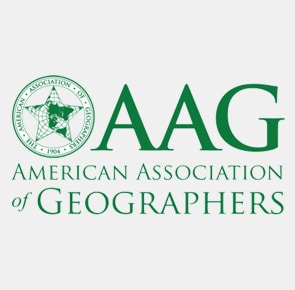
AAG
The American Geographical Association
The American Geographical Association is a policy development and advocacy organization. The association supports research and publishes a respected journal. It offers outstanding opportunities for education, projects, and networking for students in the Geography or GIS fields. The association provides valuable opportunities for volunteer participation in projects and activities that can help students gain insights and experience.
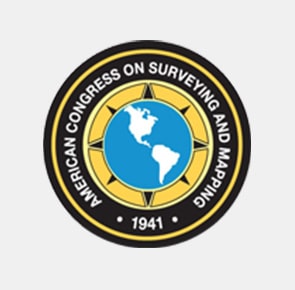
ACSM
The American Congress on Surveying and Mapping
The American Congress on Surveying and Mapping is an umbrella organization that includes the NSPS, AAGS and GLIS. The organization merged with the National Society of Professional Surveyors in 2012, and it maintains its organizational structure. By joining the ACSM, students automatically join one of the affiliates. The ACSM has valuable educational and reference resources for students.
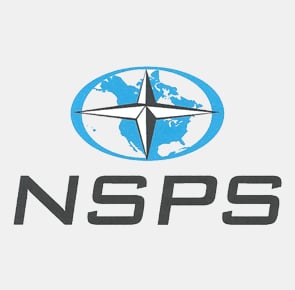
NSPS
National Society of Professional Surveyors
National Society of Professional Surveyors offers student chapters and programs to promote GIS education. The Society administers some of the useful certifications for technicians and surveyors that increase job and career opportunities. The NSPS is an excellent source of referrals and contacts that can lead to mentorship, internships, and other helpful connections to the profession.
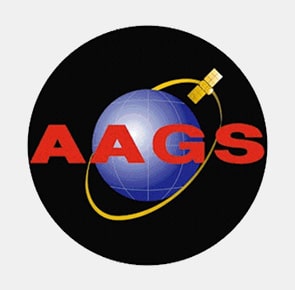
AAGS
The American Association of Geodetic Surveying
The American Association of Geodetic Surveying is an excellent choice for students interested in the field of surveying. The AAGS promotes the science of geodesy and public awareness of the benefits. The organization pushes for integration into 21st-century issues such as climate change. It offers job boards, opportunities for networking, and educational resources that can benefit students in the field of GIS.
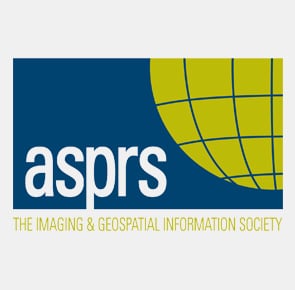
ASPRS
ASPRS
The Imaging and Geospatial Information Society advances knowledge of mapping science and responsible use of photogrammetry, remote sensing technology, and GIS. The organization offers educational and research resources that will aid students as well as opportunities for networking.
Choosing an Online Accredited College
Accreditation affects the usefulness of a degree in Geographic Information Systems. The business community and other educational institutions rely upon accreditation as a guarantee of quality education. Accreditation is a requirement for transferring or using semester credits at other schools. Many accredited schools will not accept credits from non-accredited schools.
Employers look to accreditation when reviewing applicants and deciding whom to hire. A degree from an accredited school will have a much wider audience of potential employers.
Online vs. On-Campus vs. Hybrid
Today students can choose the ways in which they pursue an education in the field of Geographic Information Systems. Students can continue to use traditional on-campus education and attend a nearby school or commute or relocate to attend classes in person with other students. However, students can also choose to learn online or mix on-campus and online education in a hybrid program.
On-campus learning has advantages. It is synchronous learning in which students gather at the same place and time to participate. Students can interact with professors and other students. Further, the on-campus style of learning places students in a community, and there are many social benefits.
Online learning helps make education accessible to people that cannot separate from their daily lives and go full-time to a college campus. Some people have jobs, businesses, or family obligations that require their daily presence. For reasons of need or convenience, online education is versatile and flexible. Students can take classes online and on their individual schedules, allowing them to maintain jobs or businesses.
The hybrid or mixed on-campus and online pattern can serve some students best. They can have some opportunity for face-to-face learning and also maintain their work, family, or other obligations when needed. The hybrid permits a custom arrangement that students can use to get the best of both types of learning.
Frequently Asked Questions
How long does it take to earn a degree in GIS?
Geographic information systems is one of the fastest growing technology certificates out there. Not only does it not take long to earn, but you will be prepared to step right into a job once you do earn your certificate. The only downside is that most of the certificates in this field are postbaccalaureate, which means that you must complete a bachelor’s degree before you can obtain this certification. However, once you have that degree, it will only take around 12 months or less to complete the whole degree program. And, if you wish to continue on in the field, a master’s-level program takes around two years to complete, though there are degree options that will accept the postbaccalaureate certificate as the first year of the Master of GIS program.
Is GIS considered difficult?
While it might seem simple from the user standpoint (after all, GIS is just a collection of data, right?) many actually find that GIS is much more difficult than they expected when they get into the program. This is, of course, dependent on your skill set, but it’s not an easy discipline. The reason for this is partially because the results are completely different from what creates them. What appears as maps or graphs on the user side is created through the complex use of a huge array of processes; processes which are still being added to through new functions such as remote sensing and others.
Does the College Have Post-Graduate Job Placement Help & Assistance?
The college that the student attends is in an ideal position to help with job searches, interviews, networking, and outreach. Students should place priority on post-graduate job placement assistance when choosing a program for Geographic Information Services.
GIS has grown dramatically in recent years as technology, and societal changes expand the needs for gathering and processing geodata. Drone technology, advances in Photogrammetry, and pressures from climate change drive new use cases for geographic information. Rather than an established traditional job market, in the field of GIS, there are a number of new and emerging economic sectors. Students and recent grads can benefit from professional career counseling and an extensive job internship and placement effort.
Some schools operate extensive job placement programs and offer career counseling to seniors and recent graduates. These activities can provide a critical asset for finding a first job or some essential direction for the early stages of a GIS career. The school also has a vibrant community of business partners, alumni, local and regional connections, and corporate sponsors. Students can utilize these assets by participating in the school, college, or university community.
Internships and collaborations are other important forms of placement assistance. Practical experience can set an applicant apart from the competition in the GIS field.
Why You Need to Consider the Overall National Rankings of the College and The Effects on Your Career or Salary
A ranking, like accreditation, affects the value of a degree. The ranking factors include the reputation of the school and the GIS program. Rankings reflect the experience and expertise of the faculty. GIS is a field that expands as new technology and innovations emerge. Faculty involvement in these dynamic patterns is a benefit for education and recommends graduates to employers. Students that decide to attend school online can look at rankings of online schools that can provide guidance about the resources most important to online attendance.
Rankings reflect factors of high interest to employers and educational institutions. They include indicators of educational quality like graduation rates, the quality and experience of the faculty, and educational resources such as libraries and research laboratories. Rankings do more than list schools in some order of preference; rankings can compare schools by critical factors for the field of geographic information systems such as related technological studies and research grants and agreements that offer opportunities to participate in current research.
Finally, employers may use rankings when considering applicants, hires, and salaries. Some rankings feature things that employers value such as the success rate of graduates, student satisfaction, and signs of academic success such as Ph.Ds and prestigious awards. Employers understand that the quality of their organizations flows, at least in part, from the educational quality of the executives, staff, and employees.
Search All Programs
